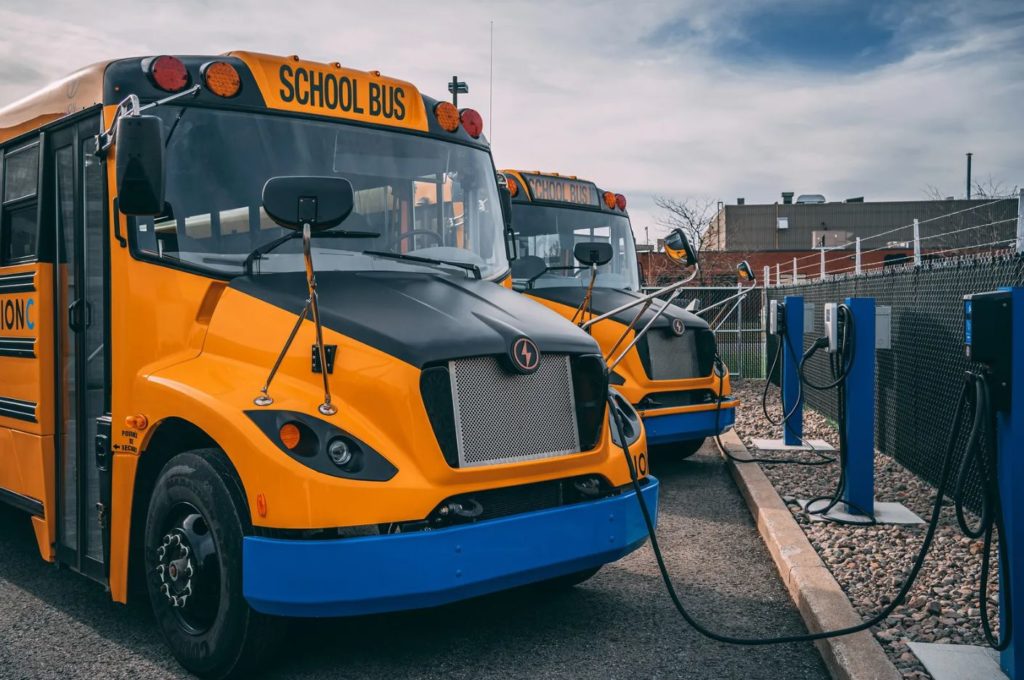Biden-Harris Administration Announces Nearly $1 Billion From EPA’s Clean School Bus Program for 389 School Districts

- These awards are the first $1 billion of a five-year, $5 billion program created by President Biden’s Bipartisan Infrastructure Law
- Funding will help districts purchase over 2,400 clean school buses, producing cleaner air in and around schools and communities
- “We are forever transforming how students across this country will get to and from school.”
Environmental Protection Agency Deputy Administrator Janet McCabe, joined by White House senior Advisor Mitch Landrieu, school district leaders, community members, and school children at the John Lewis Elementary School near the Petworth section of Washington, D.C., announced $7.6 million in rebates that will go to the District of Columbia to replace older buses with 25 new electric school buses.
The event in D.C. is part of the Biden-Harris Administration announcement for the Fiscal Year 2022 recipients of the U.S. Environmental Protection Agency’s Clean School Bus Program rebate competition, awarding nearly $1 billion from President Biden’s Bipartisan Infrastructure Law to 389 school districts spanning 50 states, Washington, D.C., and several Tribes and U.S. territories. The funding will help school districts purchase over 2,400 clean school buses that will accelerate the transition to zero emission vehicles and produce cleaner air in and around schools and communities.
“These pollutants have a significant impact on people’s health—to the health of the children who ride the bus, the bus drivers, and the folks in surrounding neighborhoods and communities,” said EPA Deputy Administrator Janet McCabe. “With unprecedented funding from the Bipartisan Infrastructure Law, we are forever transforming how students across this country will get to and from school.”
Air pollution from mobile sources like cars, buses, and trucks is linked to asthma and other health problems that hurt our communities and cause students to miss school, particularly in low income and Tribal communities. New, zero-emission and low-emission buses not only reduce greenhouse gas emissions, but they also produce cleaner air for students, bus drivers, school staff working near the bus loading areas, and the communities that the buses drive through each day.
See related article: U.S. EPA Begins Work To Set Up $27 Billion Green Bank
Video source: U.S. Environmental Protection Agency / YouTube
“This is an especially important announcement with October being Children’s Health Month,” said EPA Mid-Atlantic Regional Administrator Adam Ortiz. “These rebates will ultimately help protect children’s health by replacing older school buses with newer, cleaner ones, and transitioning to a clean transportation future means cleaner air and less pollution for all of our communities.”
In May, EPA announced the availability of $500 million for its Clean School Bus Program. Given overwhelming demand from school districts across the country, including low-income communities, Tribal nations, and territories, EPA nearly doubled the amount of funding that will be awarded to $965 million. The rebate application period closed in August with an outstanding response from school districts seeking to purchase electric and low-emission school buses across the country.
These awards are the first $1 billion of a five-year, $5 billion program created by President Biden’s Bipartisan Infrastructure Law. EPA is also designing the next round of program funding to launch in the coming months, which will include an ambitious grant competition. Through future rounds of funding, EPA will make available another $1 billion for clean school buses in Fiscal Year 2023. EPA encourages school districts not selected in the first round of rebates – and those that did not apply this funding cycle – to participate in future rounds.
View the full list of Clean School Bus award recipients here.
Source: EPA










